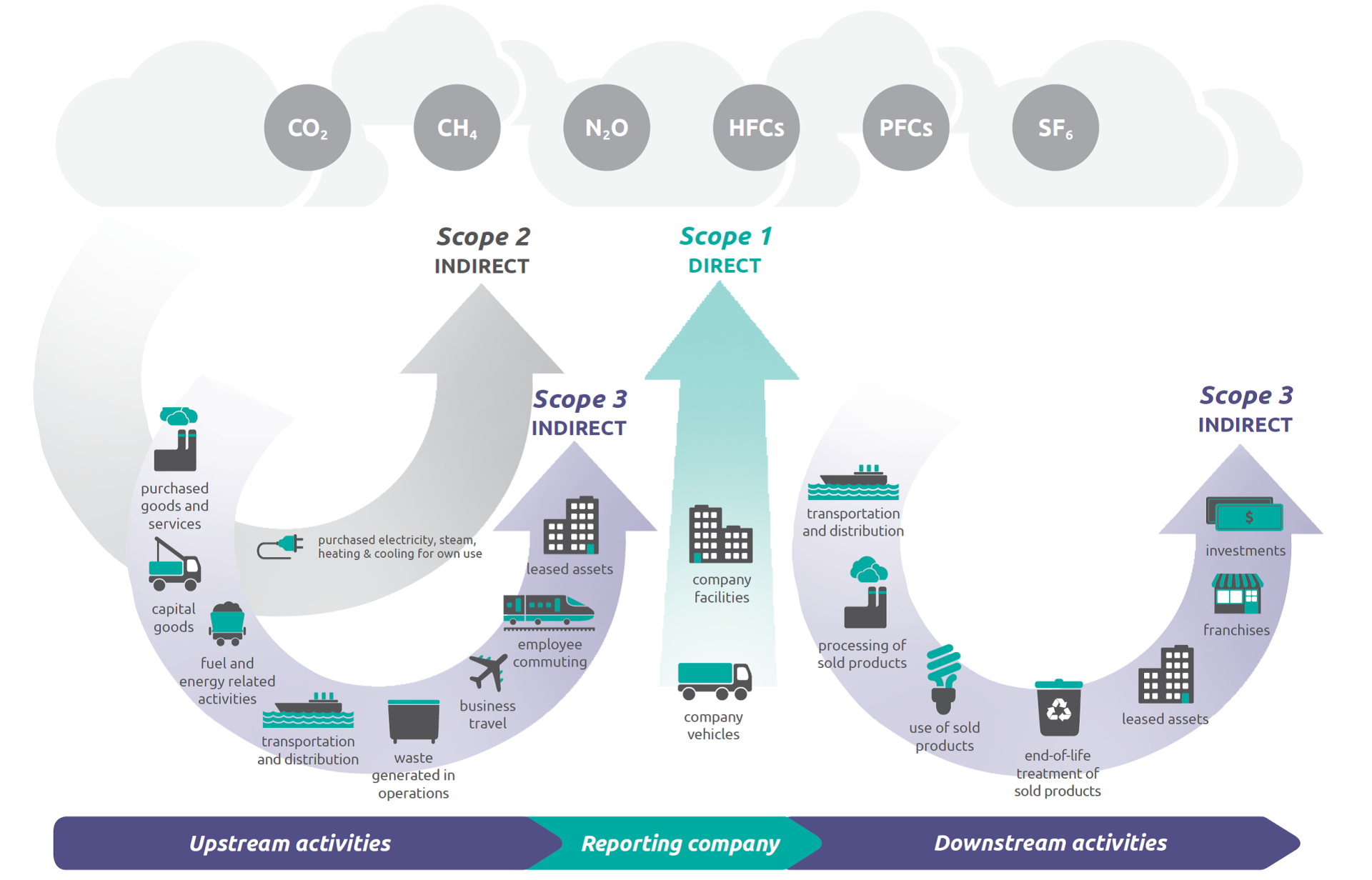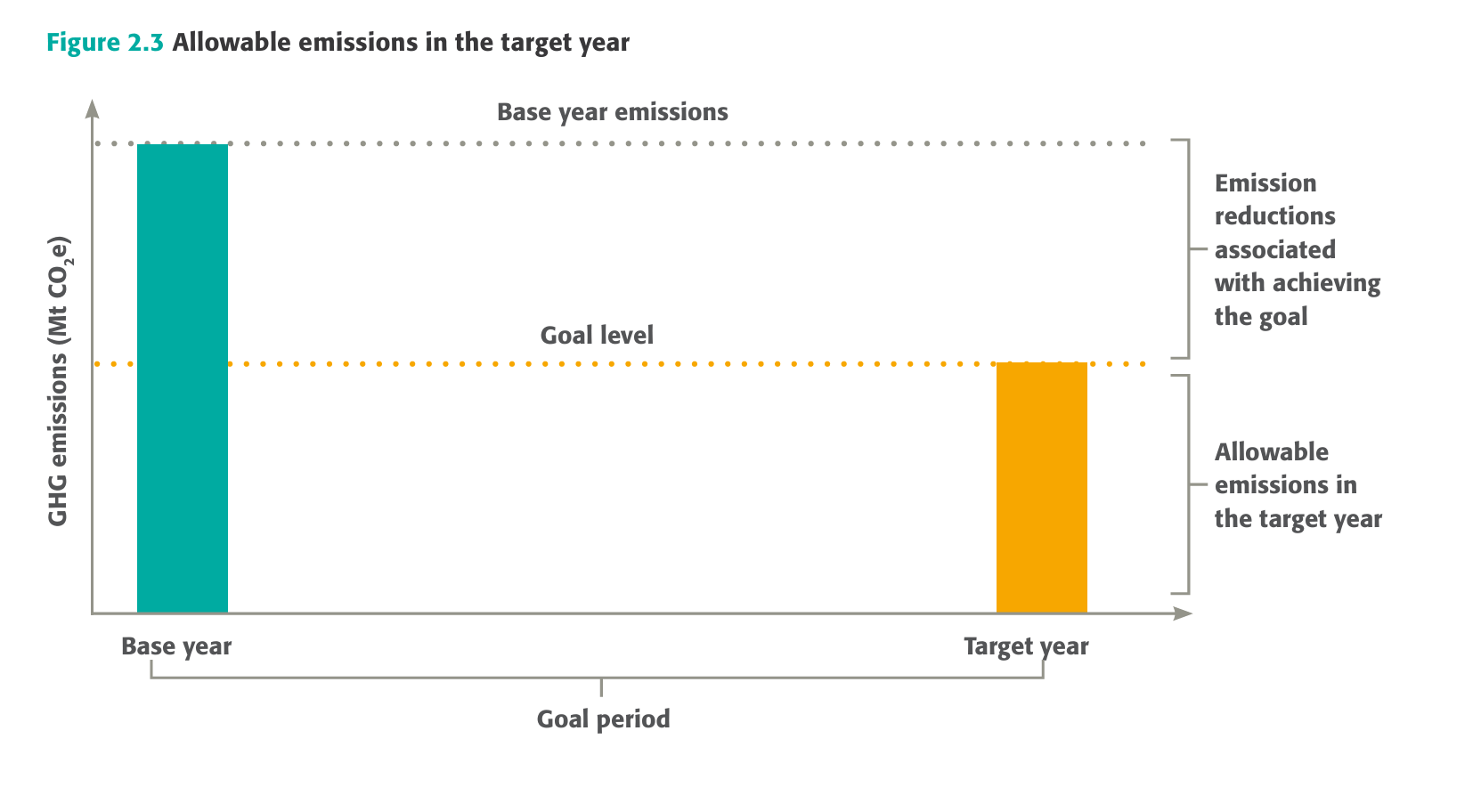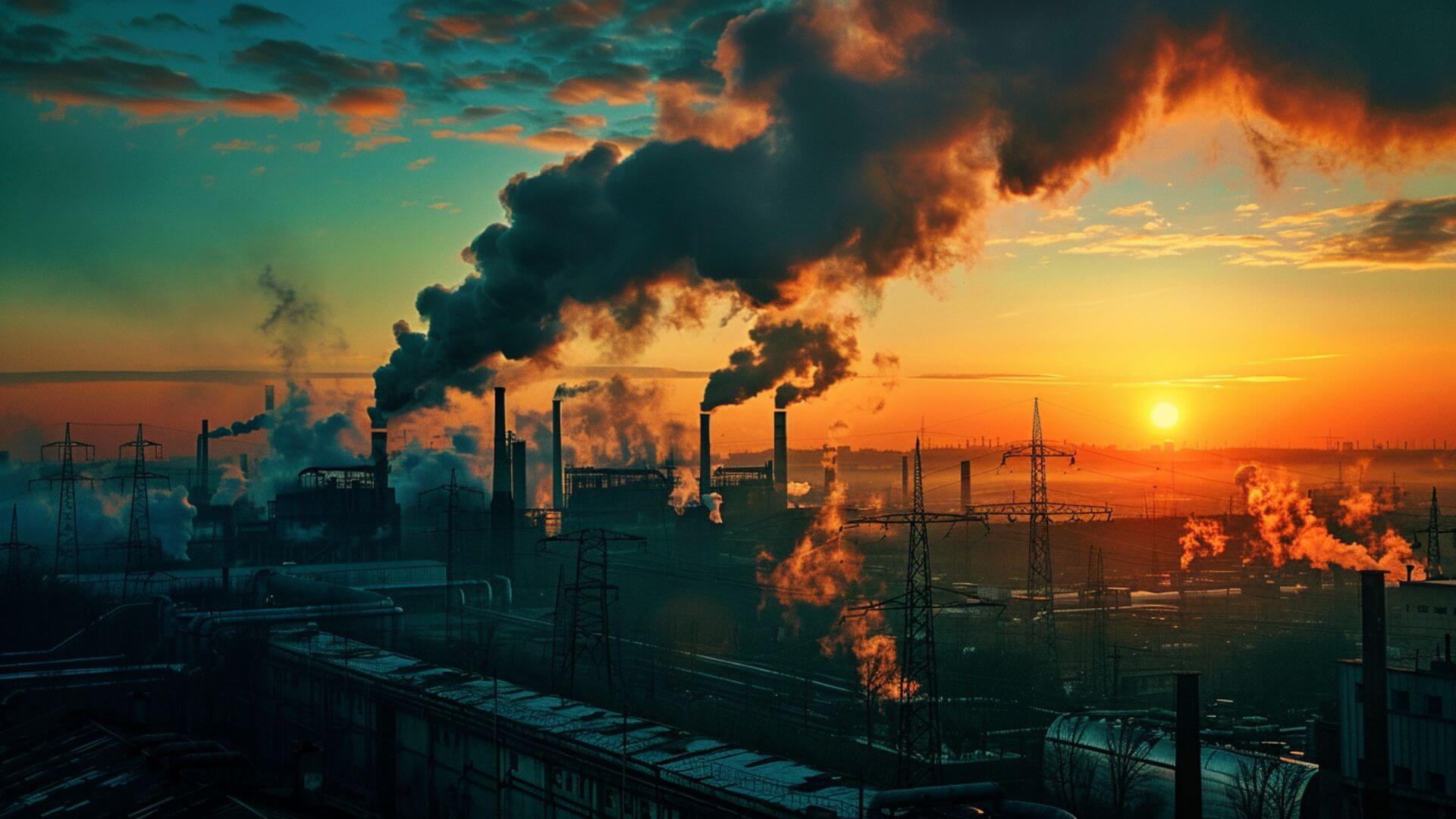A Comprehensive Guide for Businesses, Cities, Projects, and Policy Makers
Introduction
The Greenhouse Gas Protocol (GHG Protocol) is a globally acknowledged standard for measuring, managing, and reporting greenhouse gas emissions. Originally established in 1990 in response to a growing demand for a consistent framework, it now serves as the cornerstone for climate action worldwide. Today, the GHG Protocol collaborates with governments, industry associations, NGOs, corporations, and other organizations to provide the world’s most widely used emission calculation guidelines.
Key Objectives of the GHG Protocol:
-
Standardization: It offers a common set of rules and methodologies, ensuring that emissions data from different organizations and sectors can be compared on a like-for-like basis.
-
Transparency and Accuracy: The framework is built on fundamental principles—relevance, completeness, consistency, transparency, and accuracy—to guarantee that reported data reflect real conditions.
-
Facilitating Decarbonisation: By providing a unified framework for emissions management, the GHG Protocol supports efforts to reduce greenhouse gas emissions, an essential commitment under agreements like the Paris Agreement.
-
Guiding Carbon Accounting: Organizations looking for carbon accounting software must ensure that the platforms they choose align with the GHG Protocol principles, as these are considered the industry gold standard.
For further details, visit the GHG Protocol website.
Historical Evolution and Version Comparison
A Brief History
The GHG Protocol was established in 1990 in response to the need for a consistent framework for greenhouse gas reporting. Over the years, the protocol has evolved to incorporate feedback from a wide array of stakeholders. Its first version was released in 2001, and its wide acceptance by businesses, NGOs, and governments set the stage for further refinement. In 2004, a second version was published that incorporated more practical guidance, case studies, appendices, and a new chapter on setting emissions reduction targets.
Version Comparison: 2001 vs. 2004
To help illustrate the evolution, the following table summarizes the key differences between the first and second editions of the GHG Protocol:
| Aspect | GHG Protocol (First Edition – 2001) | GHG Protocol (Second Edition – 2004) |
|---|---|---|
| Release Date | September 2001 | May 2004 |
| Content Focus | Developed for corporate-level greenhouse gas inventories within an organization’s boundaries. | Built upon the first edition by gathering input from multiple stakeholders; includes practical guidelines, case studies, appendices, and a new chapter on setting GHG reduction targets. |
Table 1: Comparison of GHG Protocol First Edition (2001) vs. Second Edition (2004).
Who Does the GHG Protocol Apply To?
The GHG Protocol is designed to be versatile and applicable to a wide range of entities. Its detailed framework is intended not only for corporations but also for various other organizations and sectors:
-
Businesses: Both publicly traded and privately held companies of all sizes, across every industry, use the GHG Protocol to measure and manage their emissions. In 2016, 92% of Fortune 500 companies responding to the Carbon Disclosure Project (CDP) used the GHG Protocol either directly or through programs based on it. It underpins virtually every corporate GHG reporting initiative worldwide.
-
Governments: National, regional, and local government entities use the protocol to track, disclose, and develop policies for reducing their greenhouse gas emissions. Accurate emissions data is critical for formulating effective climate policies.
-
NGOs: Non-governmental organizations, non-profits, and other charitable institutions can apply the protocol to assess and manage their emissions while promoting sustainable practices.
-
Cities and Municipalities: Urban areas, through the Global Protocol for Community-Scale Greenhouse Gas Inventories (GPC), can measure and manage emissions from various sources such as transportation, buildings, and waste management.
-
Suppliers: As sustainability and ESG regulations grow in importance, many large companies now require their suppliers and partners to report their emissions, effectively extending the protocol’s scope throughout the supply chain.
-
Investors and Financial Institutions: These groups use the protocol to assess the environmental performance and risk exposure of companies, guiding investment and lending decisions.
-
Academic and Research Institutions: Universities and research organizations use the protocol to study emission trends, evaluate the effectiveness of policies, and contribute to the broader understanding of climate change.
-
Consulting Firms: Firms specializing in sustainability and environmental services use the protocol to offer expert advice on measuring and managing emissions.
-
Industry Associations: Trade associations and sector-specific groups adopt the protocol to standardize emissions measurement practices within their industries.
Different GHG Protocol Standards
The GHG Protocol comprises several standards designed to meet the needs of various reporting contexts. Here are the primary standards:
1. Corporate Standard
Description:
The GHG Protocol Corporate Accounting and Reporting Standard provides requirements and guidance for companies, as well as other organizations like NGOs, government agencies, and academic institutions, preparing a corporate-level GHG emissions inventory. It covers:
-
Scope 1: Direct emissions from sources owned or controlled by the organization.
-
Scope 2: Indirect emissions from purchased energy.
-
Scope 3: Other indirect emissions in the value chain.
Use Case:
Leading decarbonisation platforms (e.g., Plan A) primarily base their Corporate Carbon Footprint (CCF) calculation tools on the Corporate Standard and the Scope 3 Standard.

2. GHG Protocol for Cities
Description:
The Global Protocol for Community-Scale Greenhouse Gas Emission Inventories (GPC) is tailored for cities and communities. It provides a robust framework for accounting and reporting city-wide greenhouse gas emissions, enabling urban planners to:
-
Define geographic and activity boundaries.
-
Compile and analyze emissions data from diverse urban sources.
3. Mitigation Goal Standard
Description:
This standard is designed to help countries and cities set and evaluate national and subnational mitigation goals. It provides a standardized approach for assessing and reporting progress toward climate targets, ensuring that reductions are measurable and comparable over time.




4. Corporate Value Chain (Scope 3) Standard
Description:
The Corporate Value Chain (Scope 3) Standard helps companies measure and manage the emissions that occur throughout their entire value chain, from suppliers to product end-of-life. This standard is critical as Scope 3 emissions often represent the largest share of a company’s total emissions.
5. Policy and Action Standard
Description:
Designed primarily for countries and cities, the Policy and Action Standard provides a systematic method for estimating the greenhouse gas impact of policies and actions. This aids governments in understanding and verifying the effectiveness of climate-related policies.
6. Product Standard
Description:
The Product Standard allows companies to assess the full life cycle emissions of a product. This standard is often the first step in transitioning to more sustainable products by identifying where the greatest GHG reduction opportunities exist.
7. Project Protocol
Description:
The GHG Protocol for Project Accounting is the most comprehensive, policy-neutral tool used for quantifying the greenhouse gas benefits of specific climate change mitigation projects. It is widely used by stakeholders to validate the impacts of projects aimed at reducing emissions.
Understanding Emission Scopes: Scope 1, 2, and 3
To accurately calculate an organization’s emissions, the GHG Protocol accounts for six greenhouse gases: carbon dioxide (CO₂), methane (CH₄), nitrous oxide (N₂O), hydrofluorocarbons (HFCs), perfluorocarbons (PFCs), and sulphur hexafluoride (SF₆). It then classifies emissions into three scopes:
Scope 1: Direct Emissions
-
Definition: Emissions from sources that are owned or controlled by the organization.
-
Examples: On-site combustion (e.g., boilers, generators), emissions from company-owned vehicles, fossil-fuel power plants.
Scope 2: Indirect Emissions from Purchased Energy
-
Definition: Emissions from the generation of purchased electricity, steam, cooling, or heating consumed by the organization.
-
Examples: Emissions associated with electricity consumption in office buildings.
Scope 3: Other Indirect Emissions (Value Chain Emissions)
-
Definition: All other indirect emissions that occur in the organization’s value chain.
-
Examples: Business travel, waste disposal, purchased goods and services, employee commuting.
Note: Scope 1 and Scope 2 reporting is mandatory, whereas Scope 3 is voluntary and often more challenging to monitor. However, companies that successfully report all three scopes gain a competitive advantage and are better aligned with forthcoming regulations like the Corporate Sustainability Reporting Directive (CSRD).
Below is a simplified table summarizing the emission scopes:
| Scope | Description | Examples |
|---|---|---|
| Scope 1 | Direct emissions from sources owned or controlled by the organization | On-site combustion, company vehicles, industrial processes |
| Scope 2 | Indirect emissions from purchased energy | Electricity consumption, district heating systems |
| Scope 3 | All other indirect emissions within the value chain | Business travel, waste disposal, supplier emissions |
Table 2: Simplified Overview of GHG Emission Scopes.
Compliance with the GHG Protocol: Principles and Methodologies
Fundamental Principles
To ensure that greenhouse gas inventories are reliable and useful, the GHG Protocol is built upon five core principles:
-
Relevance:
The inventory must reflect the actual emissions profile of the organization and meet the needs of both internal and external stakeholders. -
Completeness:
All significant emission sources within the established boundaries must be included. Any exclusions should be clearly documented and justified. -
Consistency:
Consistent methodologies, data, and assumptions must be used over time to enable meaningful comparisons. Any changes in methods or boundaries must be transparently documented. -
Transparency:
All assumptions, data sources, and methods used in the inventory should be clearly disclosed to allow for independent review and verification. -
Accuracy:
Emission quantification should closely reflect actual emissions, minimizing uncertainty and ensuring that stakeholders can rely on the data for decision-making.
Detailed Methodology: Steps to Perform a GHG Inventory
A typical GHG inventory is performed in several systematic steps:
1. Setting Organizational Boundaries
-
Equity Share Approach:
Allocate emissions based on the company’s share of ownership in its investments. -
Control Approach:
Recognize 100% of the emissions for operations under full control (this can be divided into financial or operational control).
Why?
Choosing the appropriate boundary ensures that the inventory accurately reflects the organization’s influence over emissions and aligns with economic interests and risks.
2. Setting Operational Boundaries
-
Scope 1 (Direct Emissions):
Identify all on-site sources of emissions. -
Scope 2 (Indirect Energy Emissions):
Calculate emissions from purchased electricity, heating, and cooling. -
Scope 3 (Other Indirect Emissions):
Assess emissions that occur in the value chain, which are typically broken down into 15 categories (e.g., purchased goods, business travel, waste disposal).
Why?
Defining operational boundaries helps ensure that no significant source is overlooked and avoids double counting.
3. Establishing a Base Year
-
Purpose:
The base year acts as a benchmark against which future emission reductions are measured. -
Selection:
Choose a year with verifiable and representative data. Averaging multiple years can help smooth out anomalies due to extreme events.
Why?
A well-chosen base year provides a realistic starting point for tracking progress and setting achievable targets.
4. Quantifying Emissions
-
Emission Factors Method (Factor Approach):
Multiply activity data (e.g., fuel consumption) by standardized emission factors. -
Mass Balance Approach:
Common in process industries, this involves balancing the mass of inputs and outputs to estimate emissions. -
Continuous Monitoring:
Use calibrated instruments to directly measure emissions continuously over time.
Why?
Accurate quantification is essential for setting targets and measuring the effectiveness of reduction initiatives.
5. Documentation and Record-Keeping
-
Output Reports:
Generate a comprehensive GHG inventory report that details methods, data, assumptions, and results. -
Supporting Documents:
Maintain an inventory log, procedure manuals, and internal audit reports to ensure transparency and facilitate future verifications.
Why?
Clear documentation supports transparency, allows for verification, and helps maintain consistency over time.
Additional Standards and Carbon Accounting Frameworks
Besides the GHG Protocol, other standards and frameworks exist for carbon accounting. Here are some notable examples:
-
ISO 14064:
A series of international standards that provide guidelines for quantifying, monitoring, reporting, and verifying greenhouse gas emissions. ISO 14064 is more generic in some respects and is compatible with other ISO standards. -
Carbon Disclosure Project (CDP):
A global platform that collects environmental data from companies, cities, and regions. CDP’s questionnaire is widely used for disclosure to investors and stakeholders. -
Sustainability Accounting Standards Board (SASB):
Provides industry-specific standards for sustainability reporting, including carbon emissions. -
Task Force on Climate-related Financial Disclosures (TCFD):
Offers recommendations for disclosing climate-related financial risks and opportunities. -
Science-Based Targets Initiative (SBTi):
Provides guidelines for setting emissions reduction targets in line with the level of decarbonisation required to limit global warming to well below 2°C. -
Global Reporting Initiative (GRI) Standards:
A comprehensive framework for reporting on a range of sustainability topics, including GHG emissions.
Choosing a Standard:
Organizations must consider their goals, reporting requirements, and stakeholder expectations. Many companies use these standards in conjunction, with the GHG Protocol often serving as the foundation for emission calculations, while frameworks like ISO 14064 may be used for verification and additional reporting.
The Role of Technology in GHG Protocol Compliance
Leveraging technology is critical for effective GHG accounting and compliance. Carbon accounting software and decarbonisation platforms that align with the GHG Protocol enable organizations to:
-
Accurately Measure Emissions:
Automatically capture data from various sources across scopes 1, 2, and 3. -
Benchmark Performance:
Compare emissions against industry benchmarks and historical data. -
Identify Hotspots:
Detect areas with high emissions for targeted reduction efforts. -
Ensure Compliance:
Maintain records and generate reports that meet regulatory and voluntary disclosure requirements.
Why It’s Important:
Using technology streamlines data collection, improves accuracy, and allows organizations to manage and reduce their carbon footprint more efficiently—thereby supporting long-term sustainability goals and regulatory compliance.
GHG Protocol vs. ISO 14064: A Detailed Comparison
Similarities
Both the GHG Protocol and ISO 14064 are founded on the principles of:
-
Relevance
-
Completeness
-
Consistency
-
Transparency
-
Accuracy
They follow similar steps for planning, identifying, calculating, reporting, and verifying greenhouse gas emissions and removals. Both frameworks allow for flexibility and are designed to be adapted to the specific needs of each organization.
Key Differences
-
Scope and Detail:
-
GHG Protocol:
Provides a very detailed, comprehensive framework covering a wider range of industries, emission sources, and activities. It includes sector-specific guidance and extensive tools for emission calculations. -
ISO 14064:
Offers more generic guidelines that allow for interpretation and customization. It is structured in parts—guidance at the organizational level, project level, and validation/verification.
-
-
Adoption and Recognition:
The GHG Protocol is more widely used and recognized globally, forming the basis for many voluntary and mandatory reporting programs (such as CDP, SBTi, and GRI), while ISO 14064 is commonly used in conjunction with other ISO standards. -
Operational Focus:
The GHG Protocol is built as a complete package for calculating, managing, and reporting emissions, whereas ISO 14064 focuses more on quantification and verification.
Which Standard to Choose?
Organizations should consider factors such as purpose, scope, audience, resources, and reporting requirements. For most businesses, the detailed, comprehensive approach of the GHG Protocol is highly recommended. However, both standards can be used complementarily, with the GHG Protocol guiding the calculation and ISO 14064 supporting verification and formal reporting.
Conclusion
The Greenhouse Gas Protocol is a comprehensive, science-based framework that has become the international standard for measuring, managing, and reporting greenhouse gas emissions. It was established to create consistency, transparency, and accuracy in emissions data and has evolved through multiple versions to address the growing complexity of emissions reporting.
Key Takeaways:
-
Versatility: The GHG Protocol applies to a broad range of entities—from multinational corporations to local governments, NGOs, and research institutions.
-
Standardized Methodologies: It divides emissions into three scopes (Scope 1, 2, and 3), ensuring that direct and indirect emissions are clearly accounted for.
-
Compliance and Accountability: Its core principles—relevance, completeness, consistency, transparency, and accuracy—form the backbone of reliable carbon accounting.
-
Integration with Technology: Modern carbon accounting platforms built on GHG Protocol principles help organizations manage, reduce, and report their emissions efficiently.
-
Global Impact: As nations and enterprises commit to the Paris Agreement and other climate goals, adherence to the GHG Protocol is essential for credible, comparable, and actionable emissions reporting.
For organizations embarking on or refining their GHG accounting journey, it is crucial to use platforms and tools that align with the GHG Protocol. By doing so, they can not only meet regulatory requirements but also contribute to the global effort to decarbonize the economy.
For further reading and to ensure your practices are aligned with global standards, please visit:
References
- GHG Protocol Team. (2013). Corporate-Value-Chain-Accounting-Reporting-Standard. World Resources Institute & World Business Council for Sustainable Development.
- World Resources Institute, C40 Cities Climate Leadership Group, & ICLEI. (2014). Global Protocol for Community-Scale Greenhouse Gas Inventories (GPC). World Resources Institute.
- World Resources Institute. (2014). Mitigation Goal Standard.
- World Resources Institute. (2014). Policy and Action Standard.
- World Resources Institute, & World Business Council for Sustainable Development. (2004). The Greenhouse Gas Protocol: A Corporate Accounting and Reporting Standard (Revised Edition).
- Greenhalgh, S., Broekhoff, D., Daviet, F., Ranganathan, J., Acharya, M., Corbier, L., Oren, K., & Sundin, H. (2005). The GHG Protocol for Project Accounting. World Resources Institute & World Business Council for Sustainable Development.




